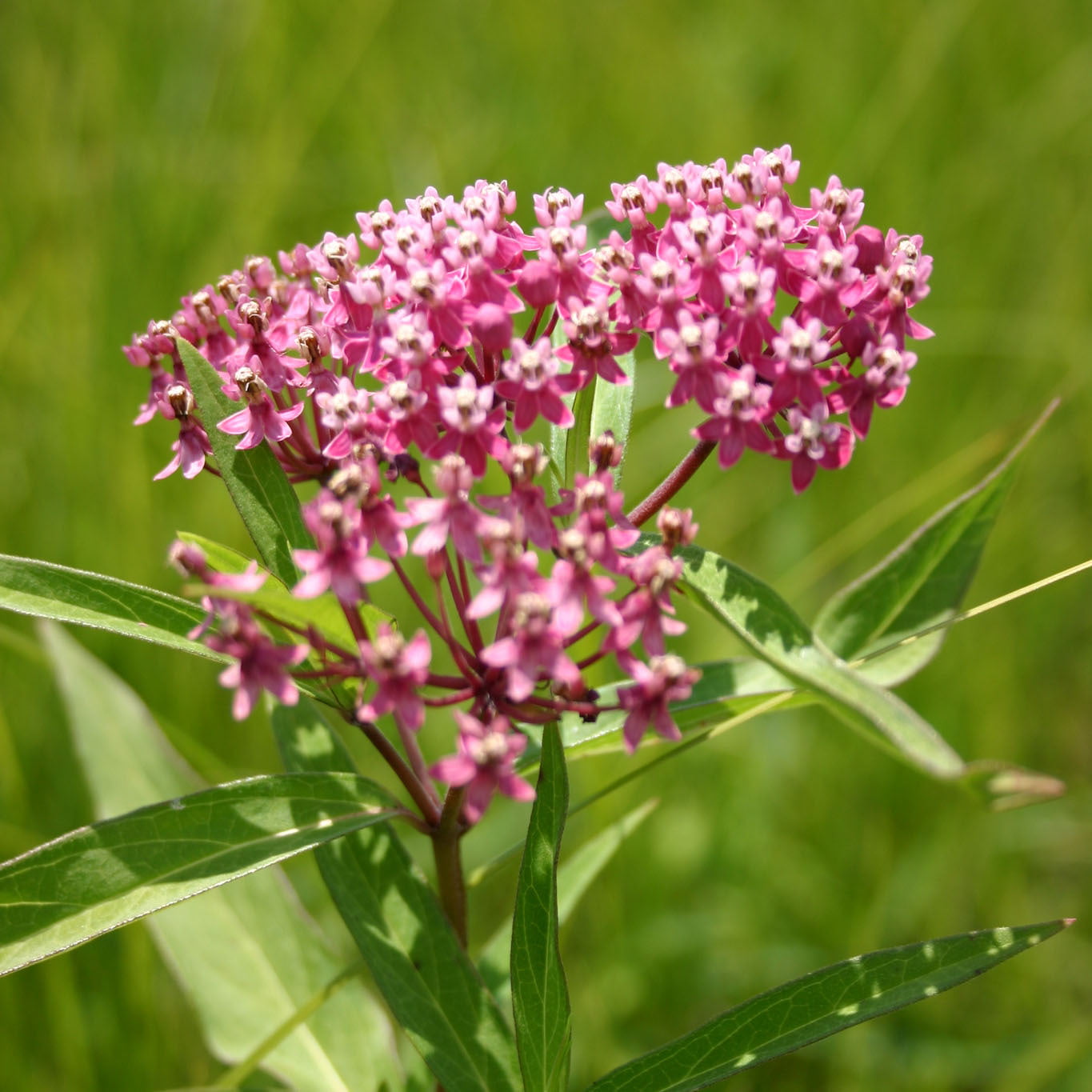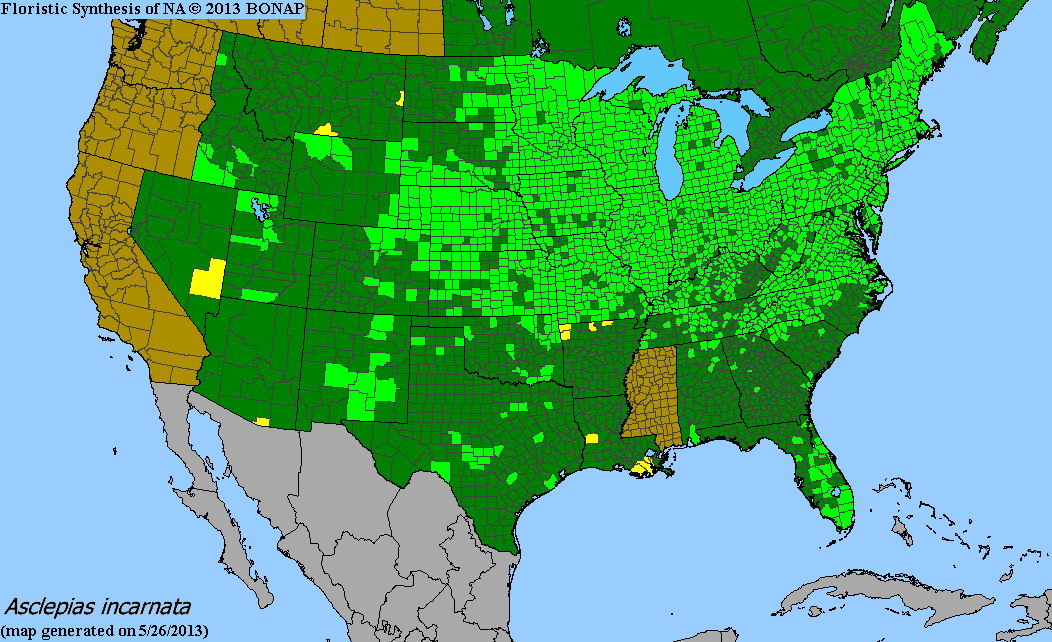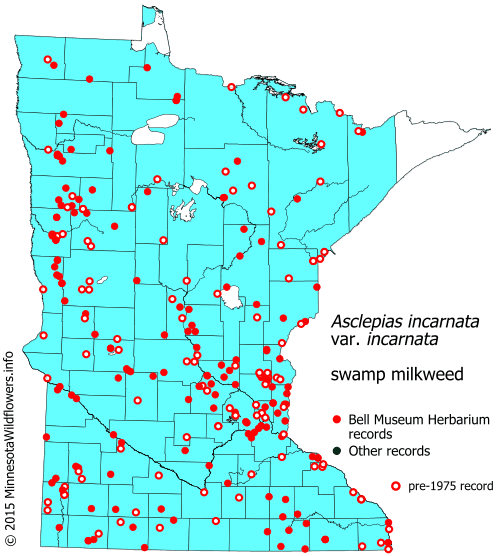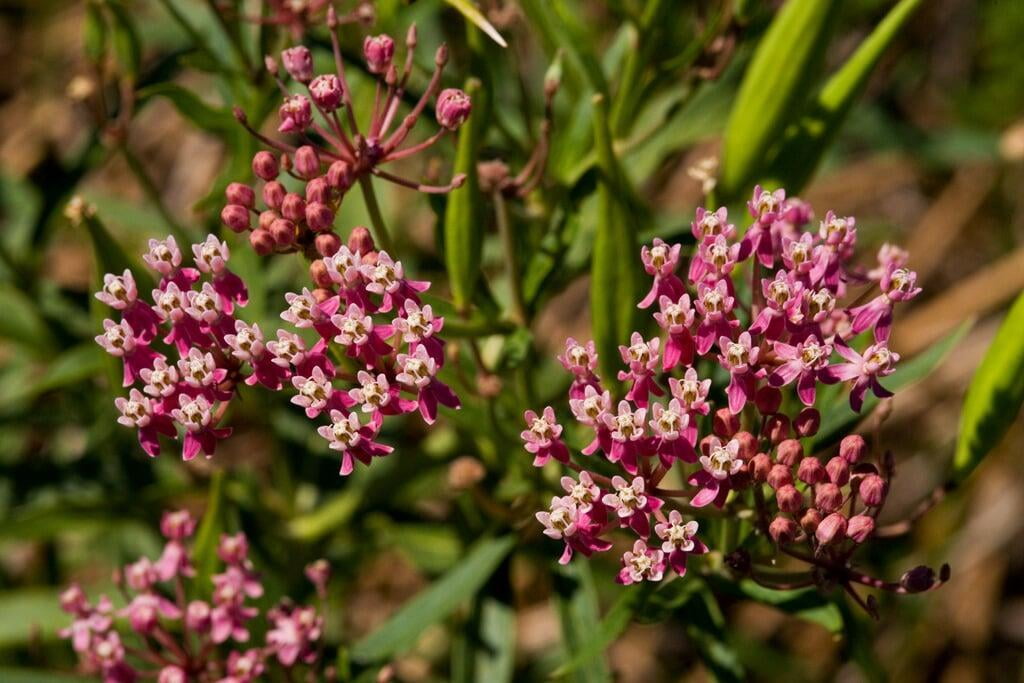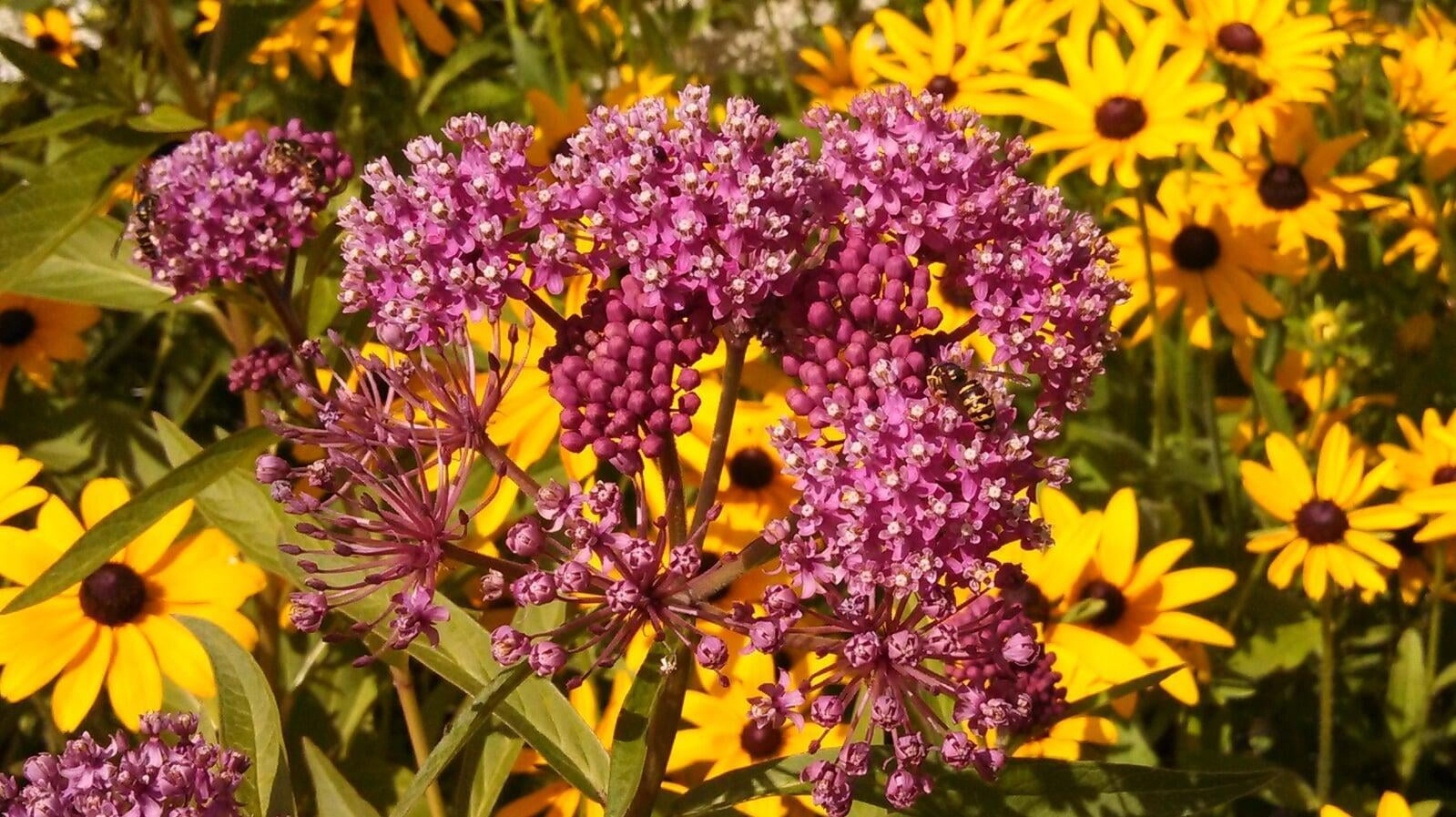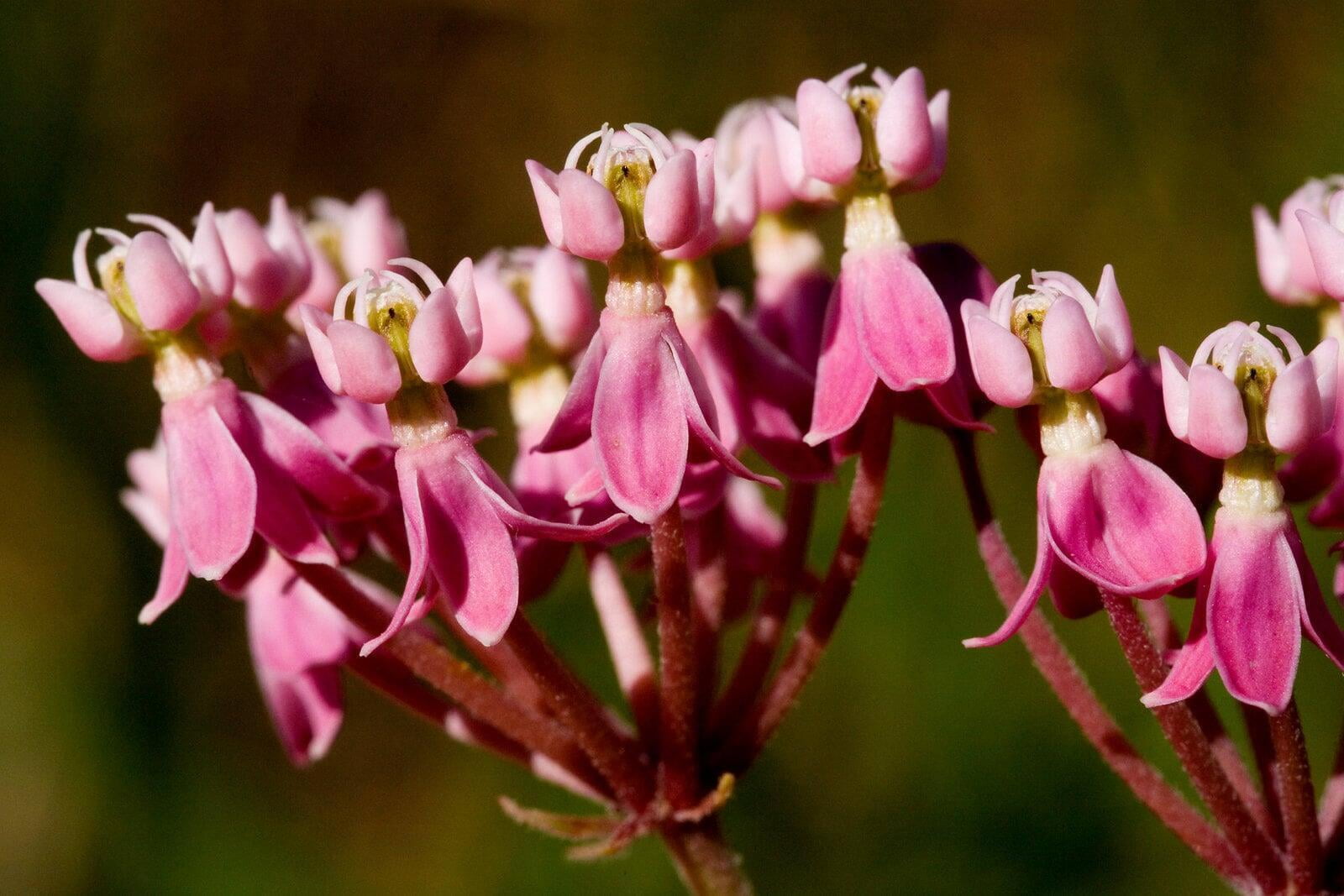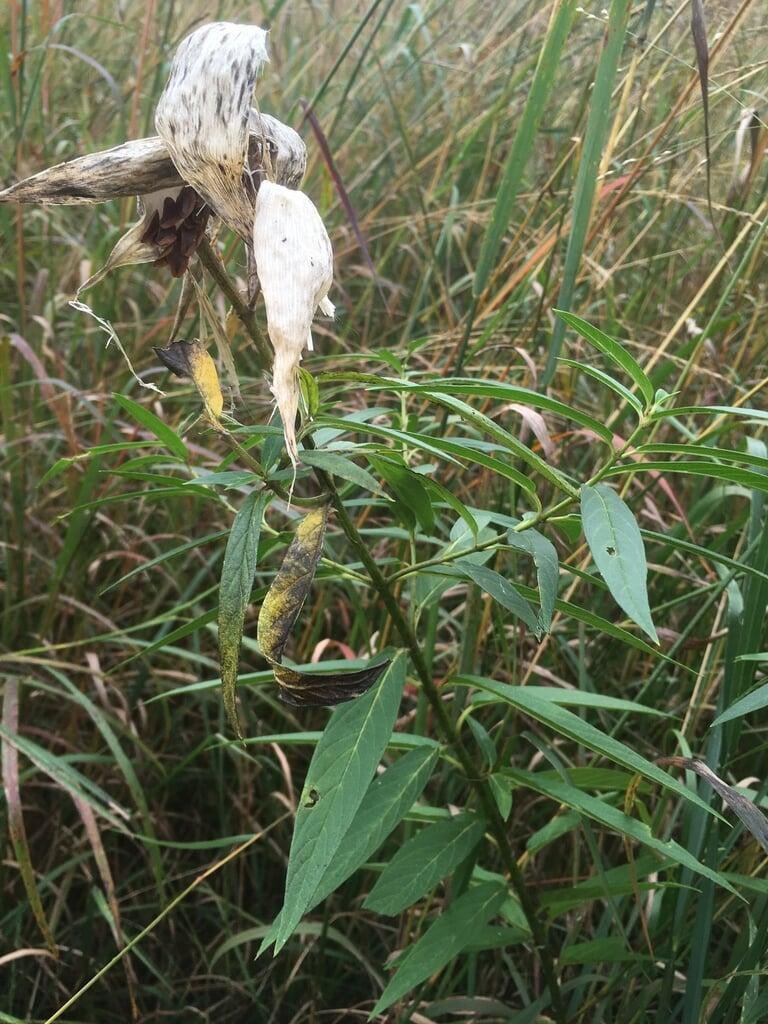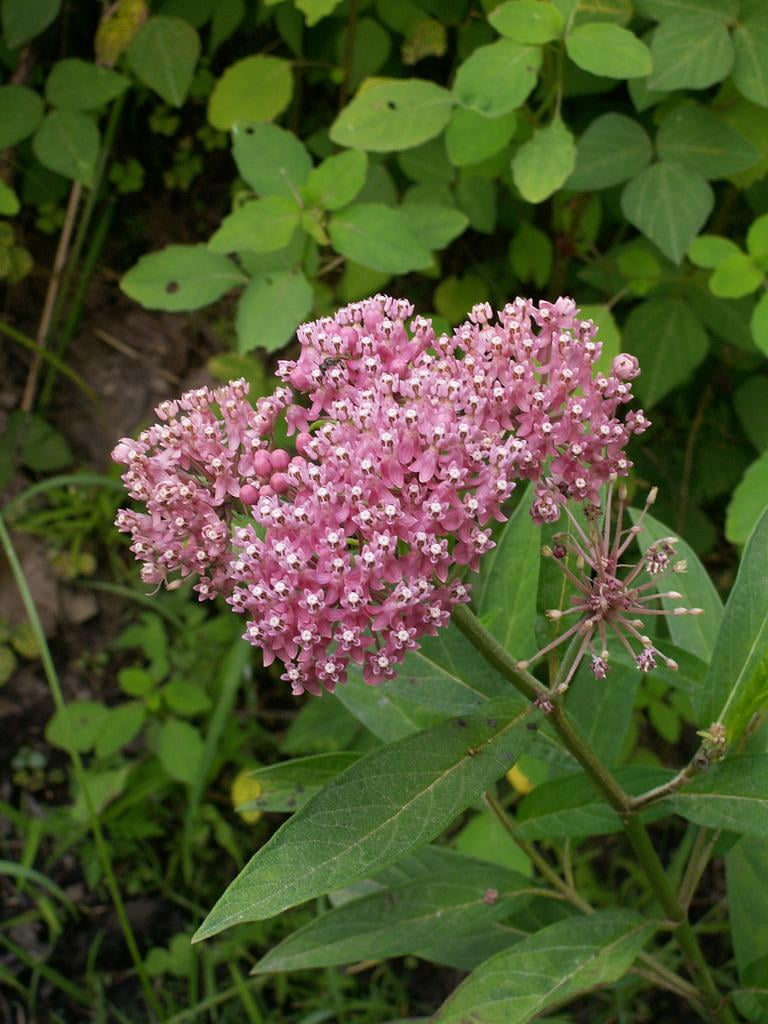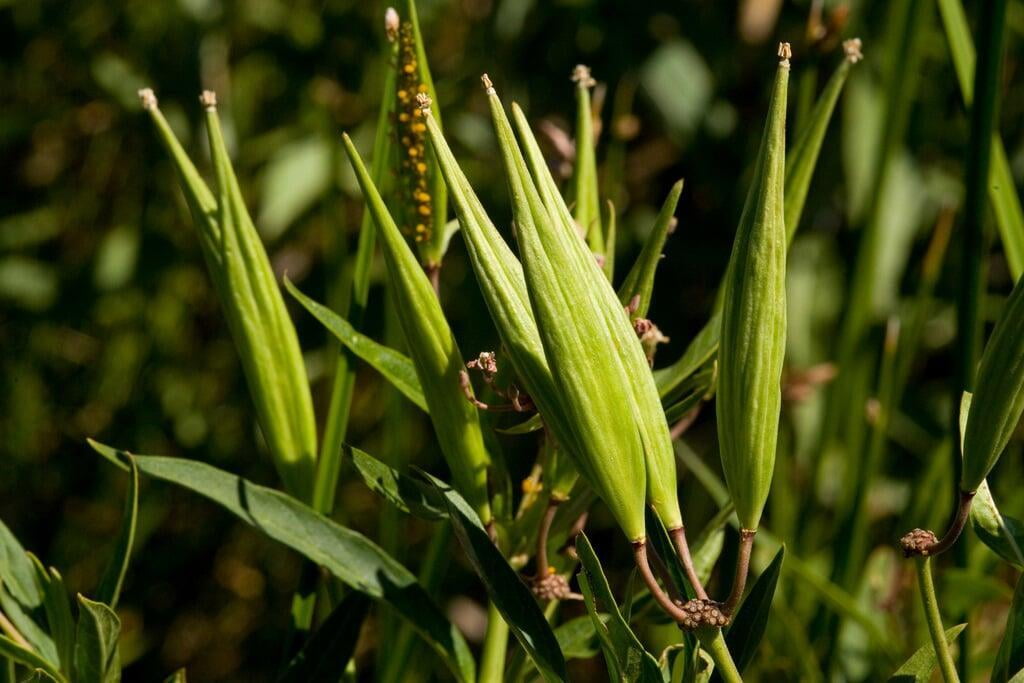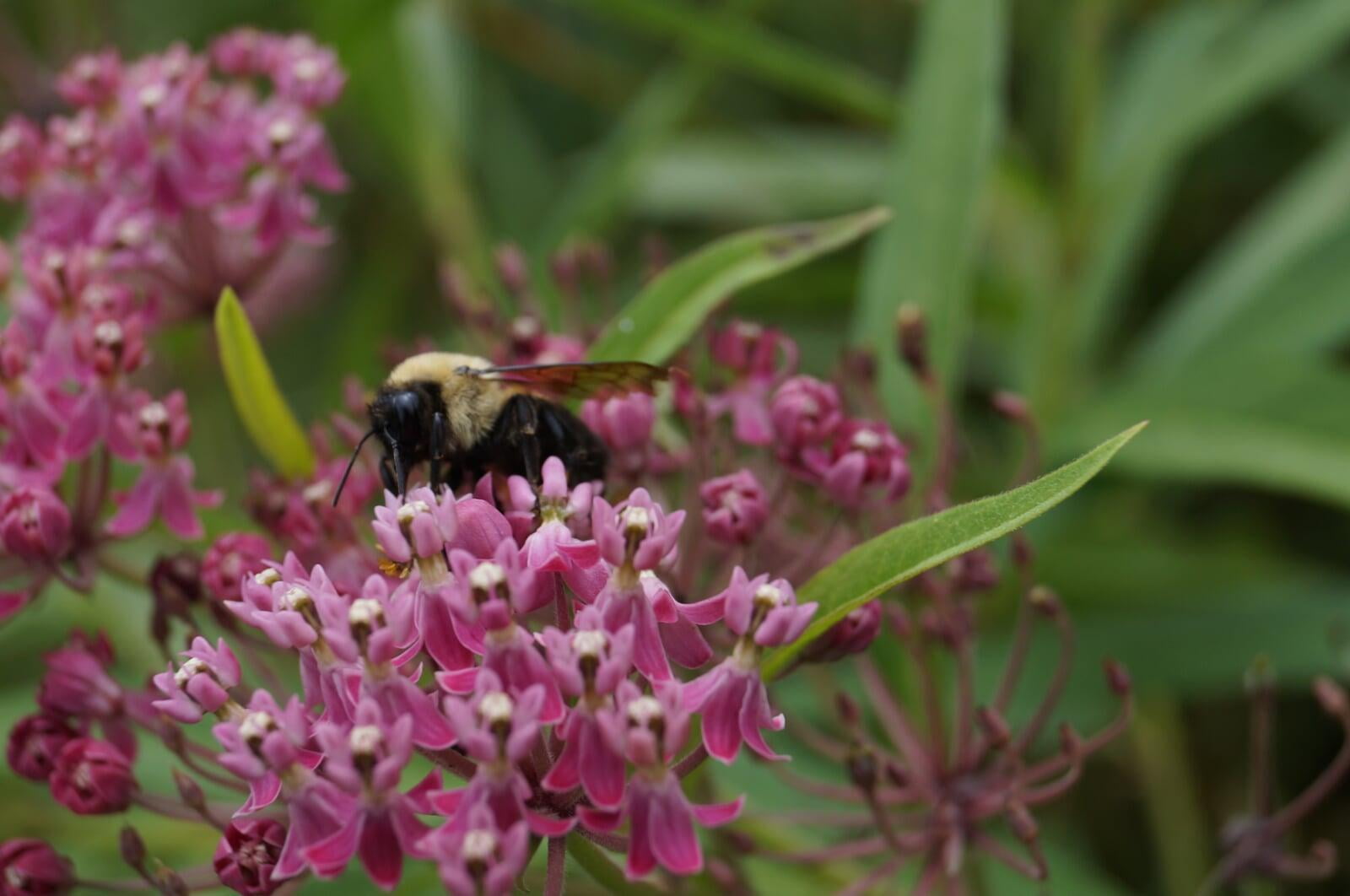Asclepias incarnata
Swamp milkweed Description:
Asclepias incarnata, commonly known as Swamp milkweed or Pink milkweed, is a herbaceous perennial plant that belongs to the milkweed family (Asclepiadaceae). It is native to North America and can be found in wetlands, along riverbanks, and in other damp areas in the eastern and central regions of the United States and Canada.
Swamp milkweed can grow up to 4 feet (1.2 meters) tall and has a clumping habit. The stems are erect and unbranched, with leaves that are narrow and lance-shaped, reaching 4-8 inches (10-20 cm) in length. The leaves are arranged oppositely along the stem and are smooth, dark green, and have pointed tips.
The plant produces clusters of small, pink to mauve, five-petaled flowers that are arranged in terminal inflorescences, or clusters of flowers, that bloom from mid to late summer. The flowers are attractive to many species of butterflies, particularly the Monarch butterfly, which uses the plant as a host for its eggs and as a food source for its larvae.
Swamp milkweed is an important plant for wildlife, providing nectar for butterflies and other pollinators, and serving as a food source for the larvae of many species of moths and butterflies. The plant is also a popular garden plant, used in butterfly gardens and naturalized areas, as well as in rain gardens and other wetland restoration projects.
Native Range:
Swamp milkweed is most commonly found in the Midwestern United States Eastward to the Northeastern United states. That said, it is still found as far west as Idaho, as far south as Texas and Florida, and along the entire East coast.
Standard Plant Information:
Plant Height: 1' - 4'
Bloom Time: June - September
Preferred Habitat: Does well in full sun in wet fields, swamps, and along shorelines.
Sowing:
For most homeowners, the best option is to scatter seed on the ground by hand broadcasting at a minimum of 16-64 pls ounces per acre. For even coverage, we recommend that you broadcast seed in perpendicular rows across the site to ensure even coverage.
You’ll want to broadcast any grass seed first, which will get raked into the soil lightly. Next, it is ideal to mulch the area lightly with either a clean (no seed) straw or preferably with our native Little Bluestem straw, sold at our retail garden centers. After a light mulching is complete, now it’s time to broadcast your native wildflower seeds, which should not be raked into the soil. A good rain or watering is sufficient to cover the seed.
Planting:
Simply dig a hole in the soil slightly larger than the plant’s roots. Ensure that the soil line of the plant is maintained during the transfer (i.e. the plant should be at the same level with the ground as it was in the pot). Pack any loose dirt back around the plant and make sure you water it well the same day to ensure it has the best chance of survival.

